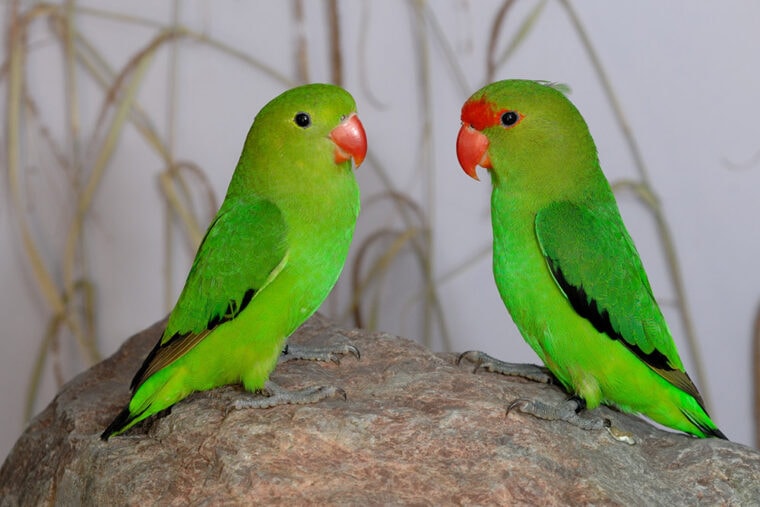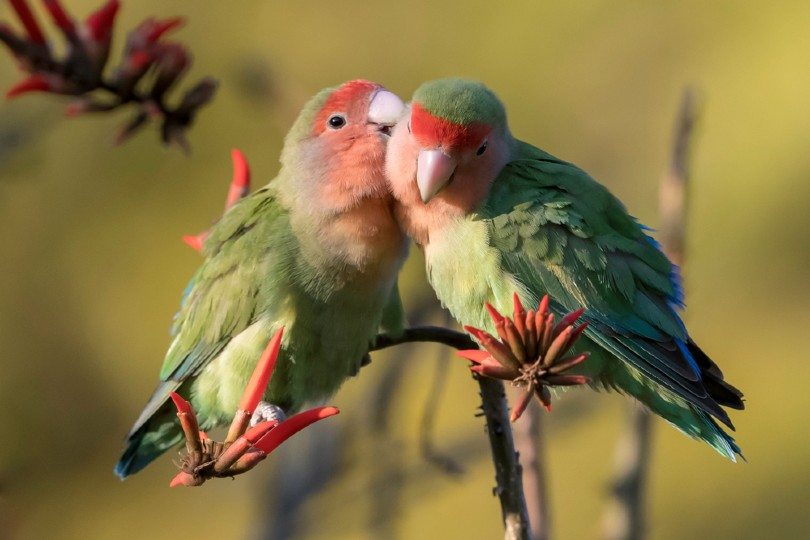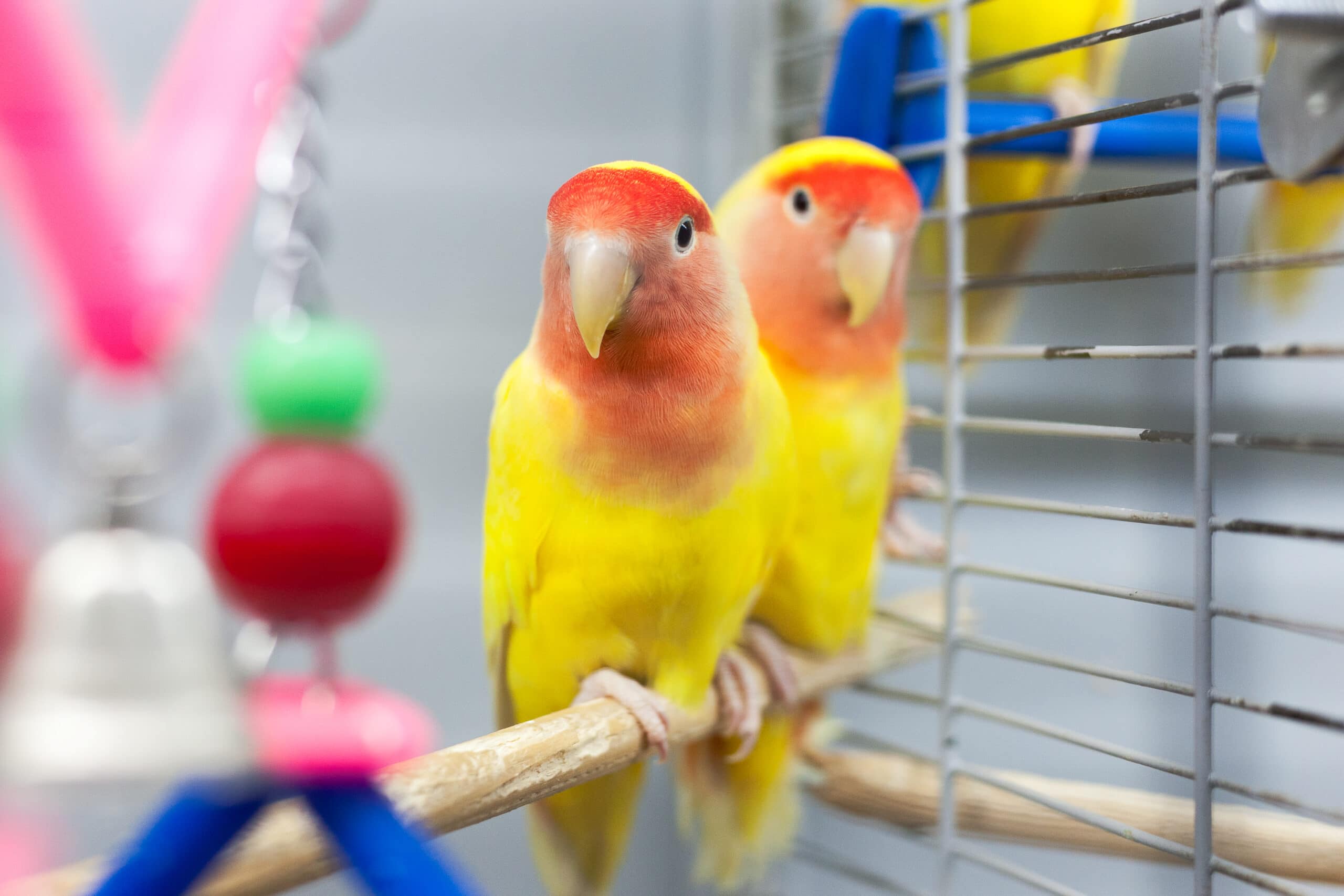
If you didn’t get lucky enough to buy a pre-sexed lovebird pair, you might wonder if you really have a lad and lass on your hands. Lucky for you, there are ways to tell the difference at home—though not all are a guarantee. Some birds do require a blood test, but you might be able to tell otherwise.
Let’s look at some visual cues that could point you in the right direction towards deciphering the gender of your birds.
The 4 Ways to Identify the Differences Between Male & Female Lovebirds
1. Dimorphic Species
Nine different species of lovebird exist. Three out of the nine species are dimorphic, meaning that the color of their feathers alone tells you whether they are male or female.
Dimorphic lovebirds include Madagascar, red-faced, and Abyssinian lovebirds. Male and female pairs will have drastic color differences, making it impossible to miss.
However, the other six species of lovebirds still require more visual cues to pinpoint the gender precisely.

2. Physical Signs of Gender in Lovebirds
Although physical signs aren’t always a foolproof method, there are some things to check out. Please note that these signs are only indicators and not certainties.
3. Personality
Male and female lovebirds tend to be slightly different in terms of personality. Females are a little bit fiery with a saucy, independent attitude. Females also tend to be more territorially aggressive than their male counterparts.
Males are a little bit more affectionate and laid back. They might want to spend time with their humans or snuggle up with you.
This isn’t always the best indicator since every creature is unique with its own particular quirks.

4. DNA Analysis
If you genuinely want to know the gender of your lovebird, the only foolproof way of knowing for sure is to opt for DNA analysis. One tiny drop of blood will let you know whether you have a male or female lovebird.
You can buy one of these tests online or consult your local avian veterinarian. The test will take a sample feather or drop of blood, and a lab will determine the results. You can expect to pay between $50 and $150 for a test.
 Physical Exams at Home
Physical Exams at Home

If you are an experienced bird owner, you might be confident enough to give your lovebird a physical exam to test the width of their pelvis.
However, if you are inexperienced with this method, it can cause harm to your bird—and even death if it’s done incorrectly. Therefore, we can’t recommend this method of sexing your love birds.
We always recommend consulting your veterinarian before anything such as this takes place. Having a professional perform the task is always your best bet.
 Final Thoughts
Final Thoughts
While there might be signs that point to your love birds being one gender or another, the only surefire way to tell is through DNA testing. If you need to sort out the details of gender because of pairing or preference, you can try to look for visual clues. However, it might lead you astray.
Never try to sex your lovebird at home if you are inexperienced, as there is way too much room for error. Consult your veterinarian before you try any physical method.
- You May Also Like: Cockatiel vs Lovebird: What’s the Difference?
Featured Image Credit: Eckhard Lietzow, Shutterstock


 Physical Exams at Home
Physical Exams at Home





